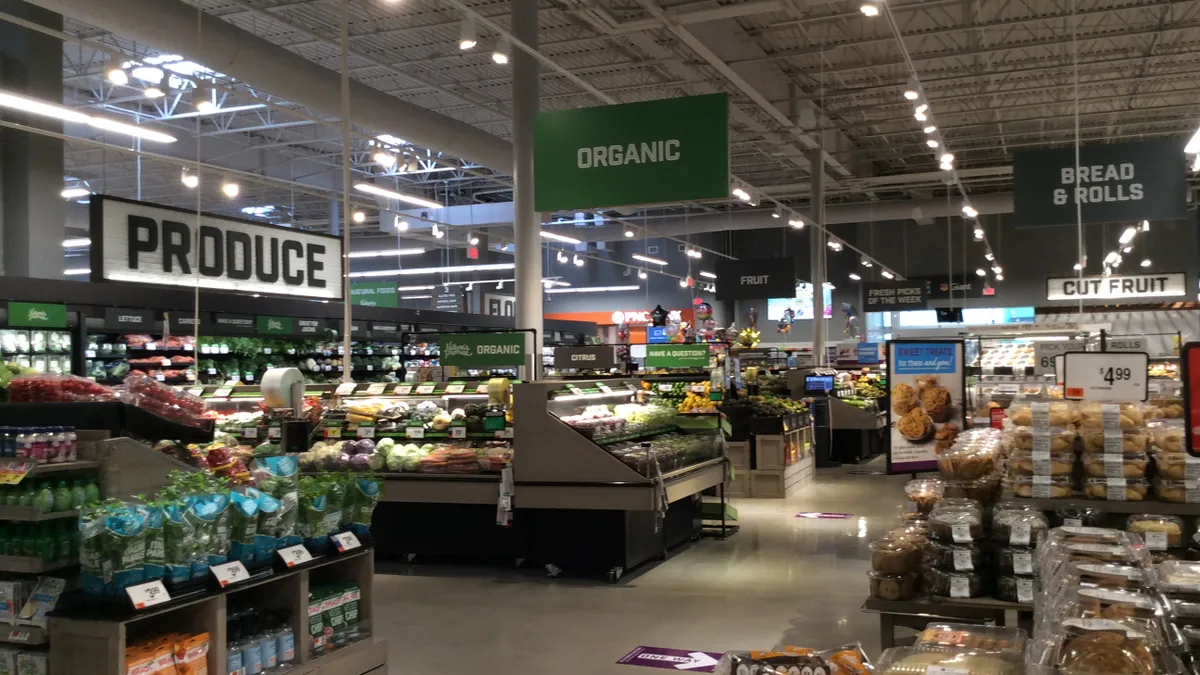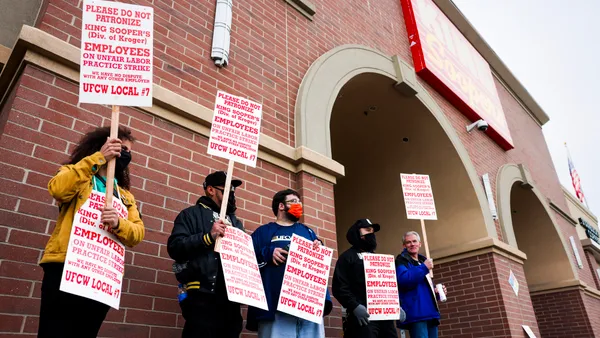Dive Brief:
- Price has emerged as the top consideration for consumers when they decide where to shop for food, according to a survey conducted last week by Inmar Intelligence.
- Roughly 68% of the 1,000 consumers Inmar surveyed on May 10 said they have started shopping at a retailer other than the one they have traditionally relied on for groceries because they perceive that prices have gone up.
- Consumers are changing their shopping habits at food retailers based on price concerns even as government data show that food prices are increasing more slowly than the overall rate of inflation.
Dive Insight:
The survey fielded by Inmar makes it clear that people's rising food bills are causing them to pay more attention to price when choosing items, even if that means abandoning their preferred retailer or becoming less wedded to products or brands they may have favored in the past.
The vast majority — almost 83% — of respondents said they are "actively looking" for ways to save money on groceries like less expensive ingredients. In addition, although just more than half of the survey participants said they recognize that conditions are challenging, 41% said they feel it's up to retailers to find ways to keep prices from rising.
More than half of respondents said they have joined more than one grocery store loyalty program because prices are rising, and 52% said they are considering joining a wholesale club to cut down on food costs.
In addition to price, respondents said they place a high priority on fresh food options and store cleanliness when choosing retailers to patronize. Notably, delivery options were relatively low on the list of considerations that matter to shoppers, with a quarter of respondents ranking the e-commerce mode lowest among the factors the survey asked about.
"You have a lot of grocery stores scrambling out there to be able to ... deliver in an hour or two, [creating] all these options for folks, and really when it came right down to it, what they cared more about was prices," said Holly Pavlika, senior vice president of corporate marketing for Inmar.
The survey also found that almost 57% of shoppers view private label products as being of lower quality than name brands even though they sense that house brands tend to be less expensive. Still, in a reflection of the dominant role price sensitivity is playing in purchasing decisions, nearly 87% said they buy store brand items to save money.
"There's a message for CPGs ... that there will be a lot more competition with private label" products going forward, Pavlika said.
Efforts by retailers to enhance their private label offerings could help combat the sense among some consumers that avoiding name brand products to save money involves a tradeoff in quality, according to Pavlika.
"In the past it was generics — they were black and white boxes and they had the store name on it, [but] they've gotten more sophisticated so a lot of stores have ... brands that I don't know that most consumers know are private label," Pavlika said, pointing to Target's Good & Gather line as an example.
Consumers are changing their food-shopping strategies against an inflationary backdrop that shows overall prices are rising more quickly than costs for food.
Prices for food purchased for home consumption rose 0.4% in April compared with March and have risen 1.2% over the past year, according to the U.S. Bureau of Labor Statistics. By comparison, the overall Consumer Price Index was up 0.8% in April on a month-over-month basis and surged 4.2% during the 12-month period ending in April — their biggest jump since 2008.
According to the U.S. Department of Agriculture, food-at-home spending was up 8.5% in 2020, while spending on food in restaurants and other venues outside the home dropped 18.3%.













